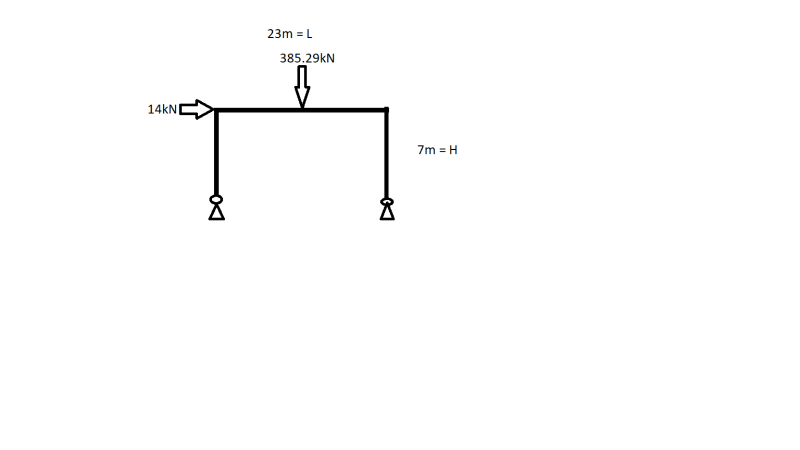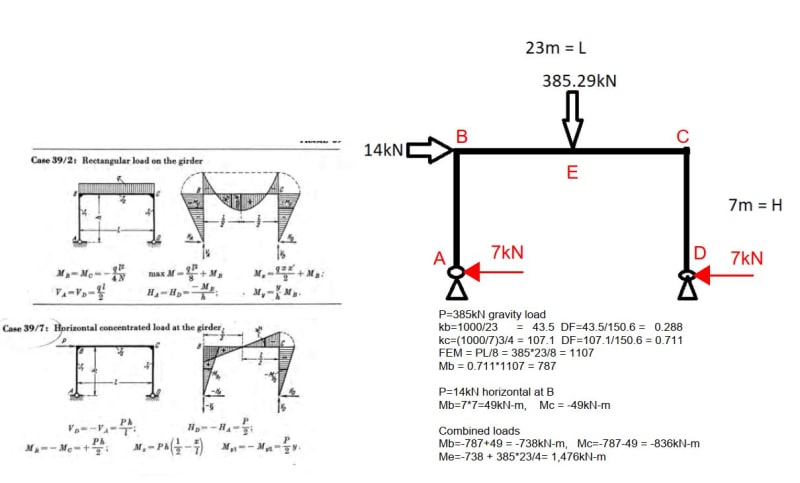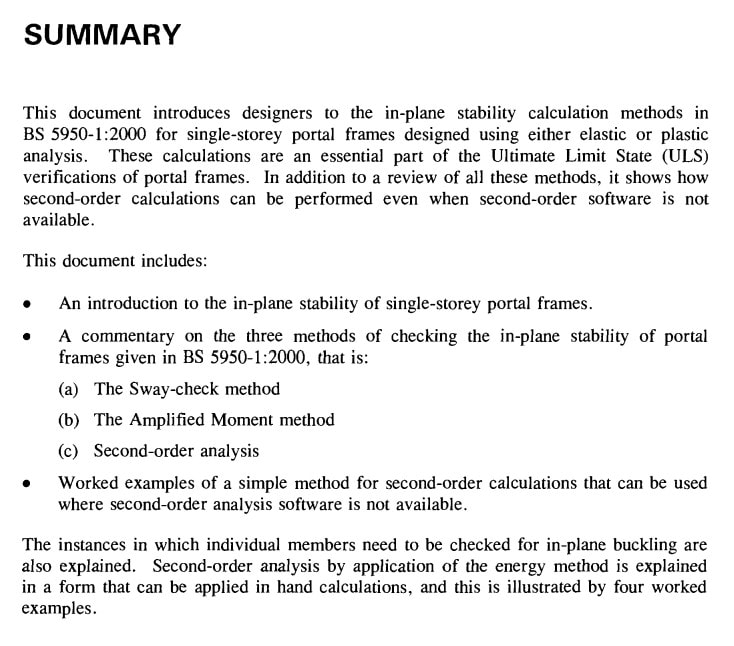Hi,
Im trying to assess the benefit of plastically analysing a portal frame against elastic analysis.
Therefore im currently trying to compare the difference between kinematic and kleinlogel for a simple portal frame analysis.
My thoughts are to assess the bending moments produced by each frame. Then compare the two against eachother with safety, cost ect as considerations.
Kinematic method should win as it will allow the use of a plastic hinge to form therefore giving the frame a higher bending moment capacity.
I have never used kleinlogel before but it seems the best option for an elastic comparison. I've found the formulas for kleinlogel but no formulas contain both a horizontal and vertical force similar to my current frame design.
The frame has two pinned feet and will assume two rigid connections for the connections between column and beam as to follow kleinlogel.
If someone could help to explain or even provide a calculation using kleinlogel for my frame and forces that would be great. (Visual learning is easier)
I have completed my kinematic analysis and have the bending moment capacity.

Im trying to assess the benefit of plastically analysing a portal frame against elastic analysis.
Therefore im currently trying to compare the difference between kinematic and kleinlogel for a simple portal frame analysis.
My thoughts are to assess the bending moments produced by each frame. Then compare the two against eachother with safety, cost ect as considerations.
Kinematic method should win as it will allow the use of a plastic hinge to form therefore giving the frame a higher bending moment capacity.
I have never used kleinlogel before but it seems the best option for an elastic comparison. I've found the formulas for kleinlogel but no formulas contain both a horizontal and vertical force similar to my current frame design.
The frame has two pinned feet and will assume two rigid connections for the connections between column and beam as to follow kleinlogel.
If someone could help to explain or even provide a calculation using kleinlogel for my frame and forces that would be great. (Visual learning is easier)
I have completed my kinematic analysis and have the bending moment capacity.


![[smile] [smile] [smile]](/data/assets/smilies/smile.gif)

